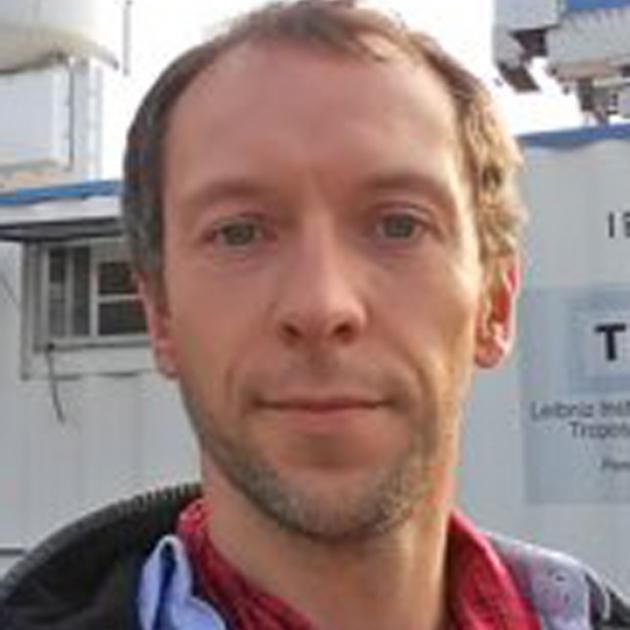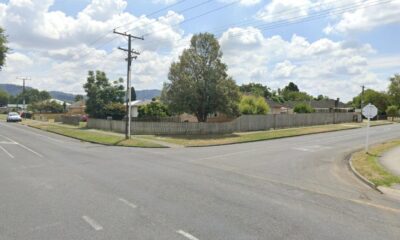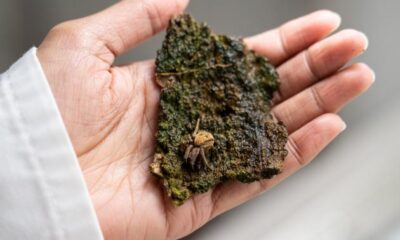Science
Laser Research Project Launches to Study Aerosol Effects in New Zealand

A significant atmospheric research project commenced at the MetService site near Invercargill Airport, focusing on the impact of aerosols on the atmosphere. The goSouth-2 project, a collaboration between German and New Zealand institutions, aims to enhance understanding of aerosols and their role in cloud formation. The project officially opens on September 3, 2023, with equipment installation already underway by five staff members from the Leibniz Institute for Tropospheric Research (TROPOS).
Aerosols are tiny airborne particles that originate from various sources, including the sea and land. They can include salt, dust, pollen, and particles from smoke or volcanic activity. According to Dr. Patric Seifert, a researcher with TROPOS, these particles are crucial for cloud formation as they function as nuclei for cloud particles to attach to. He stated, “The less aerosol particles are available, the less cloud particles can form, and vice-versa.”
Unique Research Location Offers Insights
The southern tip of New Zealand, positioned at the northern edge of the Southern Ocean, provides a unique location for studying the interplay between aerosols and clouds. Dr. Seifert explained that the atmosphere in this region can be exceptionally clean when air masses approach from the Antarctic. Conversely, incoming continental air masses from Australia can bring significant aerosol content.
By comparing the aerosol levels in these distinct air masses, researchers hope to gain insights into how clouds respond to variations in aerosol concentrations. Dr. Seifert noted that atmospheric and climate models have traditionally struggled to accurately simulate cloud behavior in the Southern Ocean compared to the northern hemisphere. The differing aerosol levels between the hemispheres may contribute to this discrepancy, as the northern hemisphere has a higher concentration of pollutants and more extensive data available for analysis.
Advanced Technology in Action
The research site in Invercargill is well-equipped to support this endeavor. MetService has been conducting vital observational studies at this location, including long-term weather balloon soundings, precipitation observations, and measurements of solar and thermal radiation. Dr. Seifert highlighted that while all data-gathering instruments are land-based, residents may notice a green laser beam in the sky near Invercargill Airport. This beam is part of the lidar (light detection and ranging) systems employed to investigate aerosol levels.
Airport staff have been informed about the presence of this fixed laser beam, which is an essential component of the study. In addition to lidar technology, researchers will utilize radar systems to detect and analyze clouds and precipitation patterns.
The TROPOS team will remain on site for the next 18 months, with a core group of approximately 15 researchers analyzing the collected data in Germany. This follows the goSouth-1 study conducted in 2022 at Pahia, about 50 kilometers from Invercargill, which involved fewer equipment resources.
As the goSouth-2 project unfolds, it promises to contribute significantly to the understanding of atmospheric processes and the relationship between aerosols and cloud formation, further enhancing climate models and predictions.
-

 Sports1 month ago
Sports1 month agoNetball New Zealand Stands Down Dame Noeline Taurua for Series
-

 Entertainment1 month ago
Entertainment1 month agoTributes Pour In for Lachlan Rofe, Reality Star, Dead at 47
-

 Sports1 month ago
Sports1 month agoSilver Ferns Legend Laura Langman Criticizes Team’s Attitude
-

 Entertainment1 week ago
Entertainment1 week agoNew ‘Maverick’ Chaser Joins Beat the Chasers Season Finale
-

 Entertainment2 months ago
Entertainment2 months agoKhloe Kardashian Embraces Innovative Stem Cell Therapy in Mexico
-

 Sports2 months ago
Sports2 months agoGaël Monfils Set to Defend ASB Classic Title in January 2026
-

 World3 months ago
World3 months agoPolice Arrest Multiple Individuals During Funeral for Zain Taikato-Fox
-

 Politics2 weeks ago
Politics2 weeks agoNetball NZ Calls for Respect Amid Dame Taurua’s Standoff
-

 Entertainment3 weeks ago
Entertainment3 weeks agoTyson Fury’s Daughter Venezuela Gets Engaged at Birthday Bash
-

 Sports3 weeks ago
Sports3 weeks agoHeather McMahan Steps Down as Ryder Cup Host After Controversy
-

 Entertainment3 weeks ago
Entertainment3 weeks agoTyson Fury’s Daughter Venezuela Gets Engaged at Birthday Bash
-

 World2 weeks ago
World2 weeks agoNew Zealand Firefighters Plan Strike on October 17 Over Pay Disputes




















